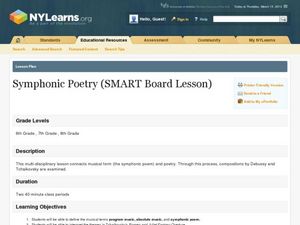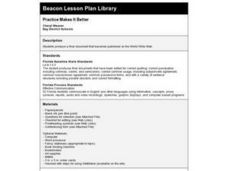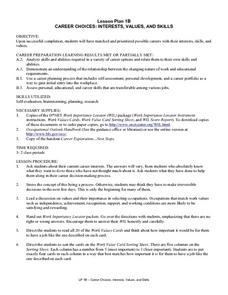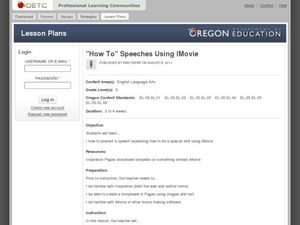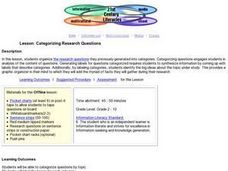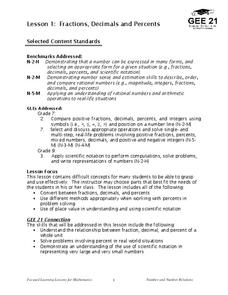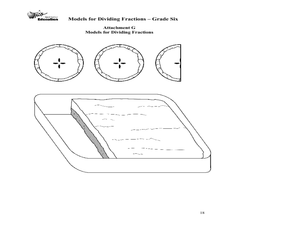Curated OER
Summarization Superstars
How do you read when you know you're going to be summarizing a text? Summarize a nonfiction text with your upper elementary schoolers. Your pupils independently read a nonfiction article and write a summary paragraph using the six-step...
Curated OER
Animal Safari on the Internet
Students verbalize, analyze and practice various research steps including using the Internet for searches and how to use bookmarked sites. They use these skills to research animals.
Curated OER
Personal Code of Ethics
Tenth graders develop a personal code of ethics and relate their personal code of ethics to school situations. They discuss steps they will take to resolve ethical issue at school and develop a personal plan to advocate for an ethical...
Curated OER
Hawthorne: Author and Narrator
Learners examine the difference between a narrator and author. They read Nathaniel Hawthorne's novel, 'The Scarlet Letter,' write a description of the narrator, and research how Hawthorne was impacted by the politics of the time.
Curated OER
Add or Subtract Whole Numbers Up to 1000
Elementary schoolers solve practice problems on the board and are shown how to line up the numbers for addition. They solve various addition problems in small groups. Everyone continues the same process for solving subtraction problems.
Curated OER
Mock Congress
High schoolers simulate the legislative process of law-making by assuming different roles. They investigate the process by writing a bill on any subject of his/her own choice
Curated OER
Symphonic Poetry (SMART Board Lesson)
Let music and poetry collide in this well-orchestrated language arts lesson plan. After studying program music and C. Debussy's Prelude to an Afternoon Faun, view the attached SMART board lesson plan to read through "Fog" by Carl...
Achievement Strategies
CCSS Unit Design Template for Art
Art classes, like any lab class, require extensive preplanning and set-up time. Use this planning template in the quiet before the storm to identify the equipment and materials that will be needed, the procedures and processes...
Curated OER
Inductive and Deductive Reasoning
High schoolers use logical arguments and inductive reasoning to make or disprove conjectures. After observing a teacher led demonstration, students discover that the deductive process narrows facts to a few possible conclusions. In...
Curated OER
Practice Makes It Better
Use the Internet to expand the audience for portfolio writings and motivate young writers to edit their work. Have your class members select a piece of writing from their portfolios to be polished and published on the World Wide Web....
Curated OER
Career Choices: Interests, Values, and Skills
Have your class write down their career interests and conduct research into the different types of jobs they can have in a field. They will use critical thinking skills in order to begin thinking about making a career choice. They are...
Utah State Courts
Judges in the Classroom
Class members explore the process of a disposition hearing for juveniles, particularly looking at how the judge decides what sentence the juvenile offender should receive. Task your pupils with evaluating different sample cases provided...
Curated OER
Football game seating: Security or Restriction?
High schoolers write an article or an editorial about the situation of Cleveland-area schools instituting policies to restrict seating at night football games. Students research their own school policy, as well as other school policies.
Curated OER
Whale Is Stuck
Students engage in the process of problem solving with the help of children's literature story of how the whale was trapped and then freed. The story illustrates the power of teamwork and commitment. The students practice the skill of...
Curated OER
"How To" Speeches Using iMovie
Challenge your pupils with this innovative how-to activity. Instead of simply having learners write an essay describing how to do a particular activity, this lesson plan has them create an iMovie describing a process.
Curated OER
Comparing 3 Digit Numbers
Warm up your mathematicians with this comparing numbers activity. Because it includes an explanation, consider projecting this as an all-class activity, covering up the answers until after learner responses have been shared. There are...
Curated OER
Nowhere to Hide
Students examine the topic of natural selection. As a class, they write their own definition to survival of the fittest and watch a video. Using the internet, they research how Darwin started to examine this process using finches and how...
Curated OER
Photojournalism: A Record of War
Students explore who has photographed war and why. They examine Mathew Brady's process for photgraphing the Civil War. Students investigate how photographic equipment has changed and improved through time. They analyze primary source war...
EngageNY
Completing the Square (part 2)
Give classes confidence in completing the square with a resource that develops the process of completing the square of more complex problems, including fractions and values greater than one. It then uses quadratic modeling for profit and...
Curated OER
Solving Systems of Equations
Students, using algebraic operations, solve and check linear equations. At the beginning of class, they write a paragraph comparing the solving of math problems to solving real life problems. Students observe solving systems of two...
Curated OER
Categorizing Research Questions
Show learners of all ages the necessary steps to solid research. Before even looking at a computer screen, they need to generate research questions or topics. They then work together to categorize all of the proposed topics. This process...
Curated OER
Choose Your Own Adventure: School Nutritional Policy
Mature audiences are required for this instructional activity on implementing health-related policies. First, they openly explore the CDC obesity page while taking notes about what they discover. Then they view a PowerPoint about the...
Curated OER
Fractions, Decimals and Percents
Young scholars investigate the differences when using decimals, fractions, and percents. They focus on the process of using them in real problems and how to convert them from one form to another.
Ohio Department of Education
Models for Dividing Fractions - Grade Six
Fifth and sixth graders use food and candy to help them represent division of fractions and develop algorithms to solve fraction problems. They discuss dividing whole numbers by fractions. Pupils use sticks and chocolate bars to study...
Other popular searches
- Writing Process Steps
- Four Steps of Writing Process
- Writing Process Steps Web
- 42 Writing Process Steps
- The Writing Process Steps








